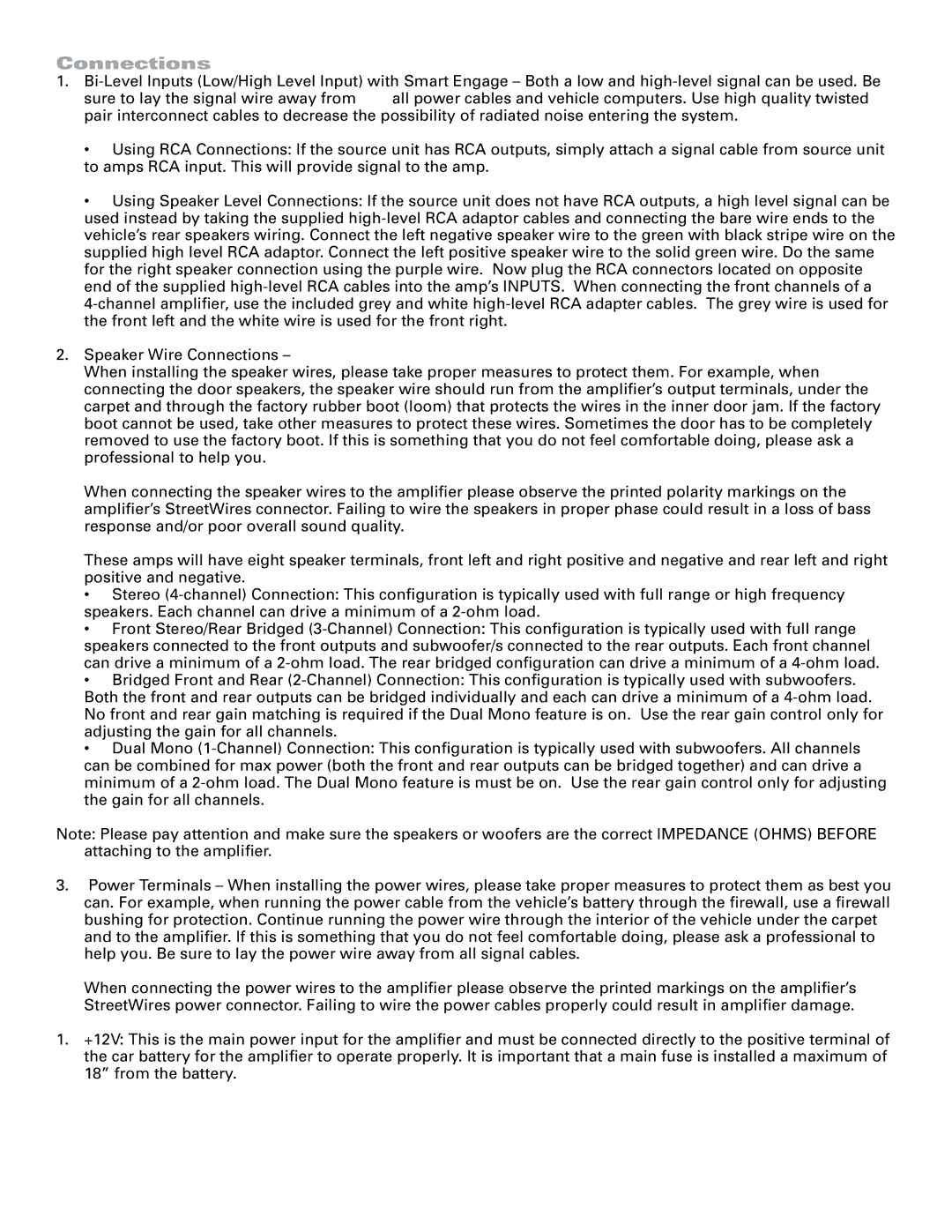Connections
1.
sure to lay the signal wire away from all power cables and vehicle computers. Use high quality twisted pair interconnect cables to decrease the possibility of radiated noise entering the system.
•Using RCA Connections: If the source unit has RCA outputs, simply attach a signal cable from source unit to amps RCA input. This will provide signal to the amp.
•Using Speaker Level Connections: If the source unit does not have RCA outputs, a high level signal can be used instead by taking the supplied
2.Speaker Wire Connections –
When installing the speaker wires, please take proper measures to protect them. For example, when connecting the door speakers, the speaker wire should run from the amplifier’s output terminals, under the carpet and through the factory rubber boot (loom) that protects the wires in the inner door jam. If the factory boot cannot be used, take other measures to protect these wires. Sometimes the door has to be completely removed to use the factory boot. If this is something that you do not feel comfortable doing, please ask a professional to help you.
When connecting the speaker wires to the amplifier please observe the printed polarity markings on the amplifier’s StreetWires connector. Failing to wire the speakers in proper phase could result in a loss of bass response and/or poor overall sound quality.
These amps will have eight speaker terminals, front left and right positive and negative and rear left and right positive and negative.
•Stereo
•Front Stereo/Rear Bridged
•Bridged Front and Rear
•Dual Mono
can be combined for max power (both the front and rear outputs can be bridged together) and can drive a minimum of a
Note: Please pay attention and make sure the speakers or woofers are the correct IMPEDANCE (OHMS) BEFORE attaching to the amplifier.
3.Power Terminals – When installing the power wires, please take proper measures to protect them as best you can. For example, when running the power cable from the vehicle’s battery through the firewall, use a firewall bushing for protection. Continue running the power wire through the interior of the vehicle under the carpet and to the amplifier. If this is something that you do not feel comfortable doing, please ask a professional to help you. Be sure to lay the power wire away from all signal cables.
When connecting the power wires to the amplifier please observe the printed markings on the amplifier’s StreetWires power connector. Failing to wire the power cables properly could result in amplifier damage.
1.+12V: This is the main power input for the amplifier and must be connected directly to the positive terminal of the car battery for the amplifier to operate properly. It is important that a main fuse is installed a maximum of 18” from the battery.
